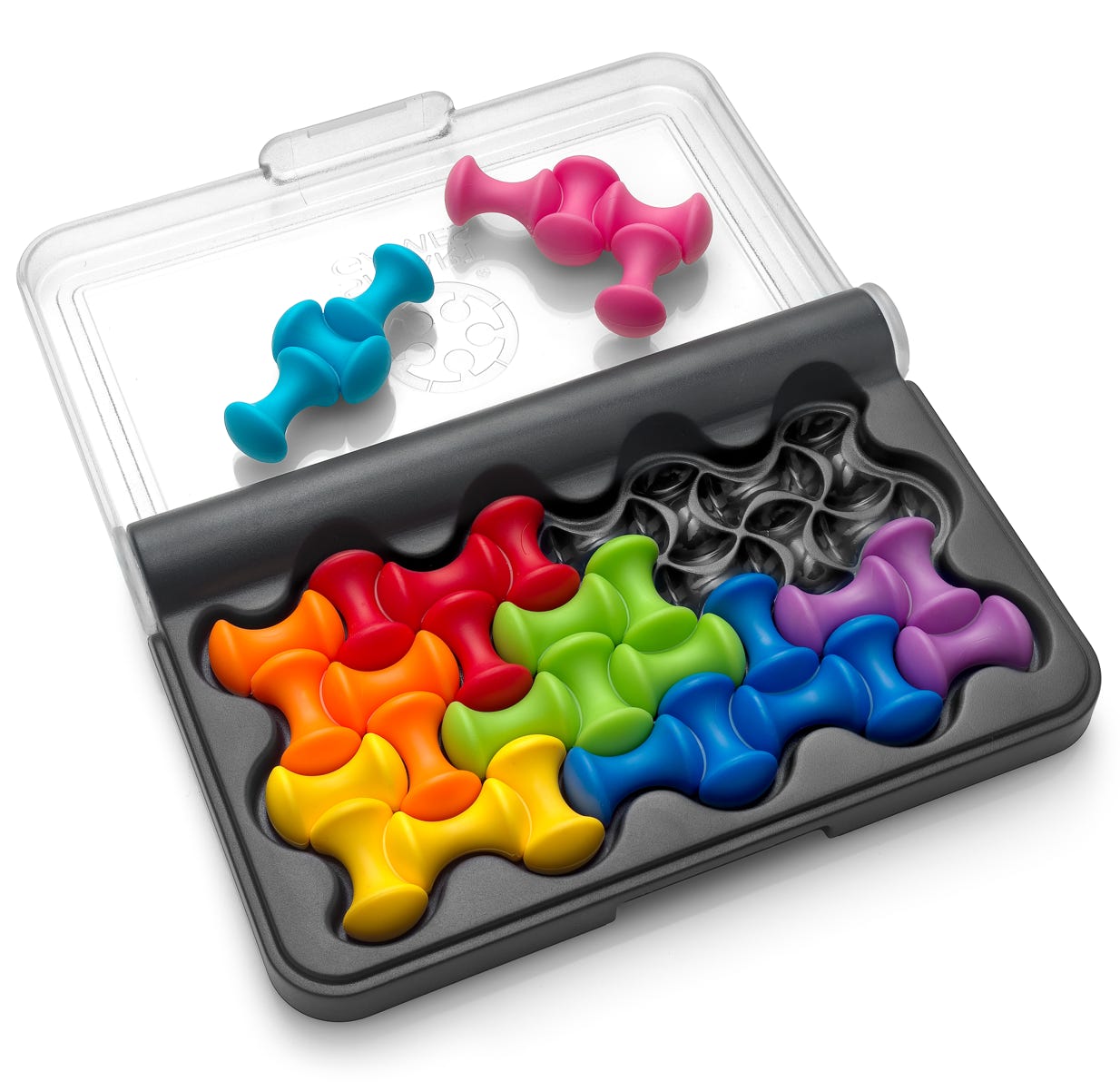IQ-Waves
The product development of IQ-Waves (for SmartGames)
Raf Peeters, January 2024
IQ-Waves was inspired by a shape my colleague Leighton designed. Each segment has a distinct orientation, either horizontal or vertical, allowing individual segments to fit only on one half of the game board. However, by rotating them 90°, the same segments can fit on the other half. Of course in reality this is not always possible, because individual segments are permanently attached to others, forming larger puzzle pieces of varying shapes. When you play with them, it feels like a puzzle with pentominoes or tetrominoes, but with this extra limitation regarding the orientation of the segments.
That pretty much sums it up. It's a straightforward puzzle game, almost as easy to explain as IQ-Stars. But while simplicity certainly has its merits, we always aim to do more. First we tried different formats. We started with this concept in the IQ+ format, also used for IQ-Gears, IQ-Stixx and IQ-Love. This worked, thus we created all the challenges we needed. Subsequently, we attempted to apply this concept to the rectangular format of the regular IQ-games. This also worked, but was more difficult because a 4x8 is more restrictive than a 6x6 game board. A few months after we started this project, we received the request to design something in the shape of a jigsaw as detailed on the IQ-Matrix page. The challenges of the square version of this concept were used for that project, which left the 4x8 for this one. Apart from the shape of the pieces and game board, both concepts are very similar. Although I don’t think anyone who hasn’t read this blog, will notice. Upon finalizing the game, we opted for a different material, TPR, for the puzzle pieces instead of ABS plastics. We have used this material often for preschool games, but never for an IQ-Puzzle. While not strictly necessary, it literally gives “a nice touch” to the game. And an extra benefit (when you play testing it late at night in bed with someone sleeping next to you) is that it doesn’t make a clicking noise, each time you place a puzzle piece on the grid. By the way, for those with thicker fingers, a handy trick to reposition a piece is to push on the edge (on the short side of a segment), causing the piece to tilt and making it easy to pick up. Not that I personally need to do that, as I don't have thick fingers.
As usual the design of the packaging was more trouble than the actual product. SmartGames is in the middle of the process to update their line look. However, we had already designed a packaging in the old style before learning about the change. It's unfortunate that no one will ever see that one, as I genuinely preferred that design. The final packaging in the new line features a water background, although the pieces don't resemble water at all. They were intended as "waves," representing the shape found in brain waves, audio waves, mathematical waves, etc. So the link to water is very literal and doesn’t make any sense for me. But fortunately, an sub-optimal packaging doesn’t affect the quality of the actual game inside ;-)
IQ-Waves will be available in Spring 2024.

Example of a JUNIOR challenge (left) and solution (right) of IQ-Waves



GAME RULES IQ-WAVES
1) Choose a challenge. Place the pieces shown in the challenge in the indicated position and orientation on the game board.
2) Place all the remaining pieces on the gameboard. Pieces will only fit if the orientation of their segments matches the orientation of the grid (either horizontal or vertical). Changing the orientation of a puzzle piece 90° will make it fit on the other half of the positions on the game board. Both the front and back sides of the puzzle pieces can be used.
3) There is only 1 solution for each challenge, which you will find at the end of the booklet.
Website ©2024 Raf Peeters
Products and images: © Smart